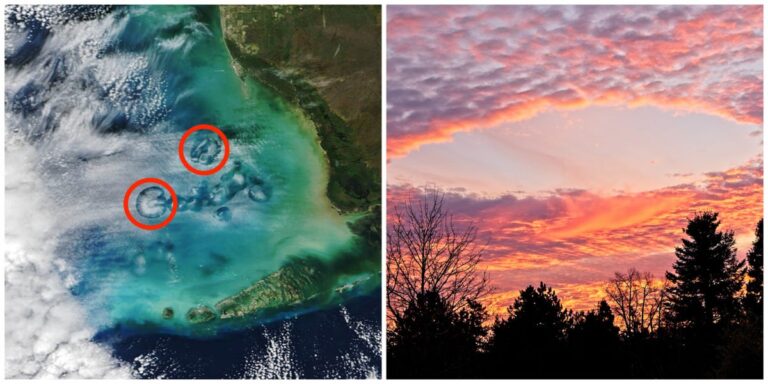- A NASA satellite has taken a photo of a giant ring-shaped cloud over the Gulf of Mexico.
- This phenomenon, called a hollow cloud, can be seen both from the ground and from space.
- Cabum clouds have a natural explanation, but they have been mistaken for aliens or other strange phenomena.
Earlier this year, while NASA's Terra satellite was flying over the Gulf of Mexico, one of its instruments snapped a photo of a strange cloud.
The clouds looked like someone had punched a hole in the sky.
This unusual phenomenon is not new. According to NASA, researchers have been documenting this phenomenon since the 1940s. But it wasn't until about 15 years ago that scientists finally discovered the explanation.
This feature is officially called a cavum cloud, but is also sometimes called a hole-punch cloud or false-streak hole. It is so large that it can be seen both from the ground and from space.
Viewed from the ground, it looks like this:
No wonder people mistake them for flying saucers and other unusual phenomena. They look different from ordinary clouds.
And in fact, they are not your average cloud. Without human technology, the cavum cloud would never have existed.
A pair of studies published in 2010 and 2011 say they form when a plane passes through a bank of mid-level altocumulus clouds (clouds made of supercooled droplets).
Discovered in 2010 by researchers at NASA Langley Research Center The shallower the angle at which a plane passes through a cloud, the larger the cavity it leaves behind.
The analysis revealed that any type of aircraft can generate cavity clouds.
NASA's Terra satellite took a photo of a “clump” of cavum clouds near Florida's west coast on January 30th. NASA says the more than 1,000 flights per day from Miami International Airport are the main cause of the phenomenon.
The Terra satellite is designed to study changes in Earth's atmosphere and the effects of climate change. Researchers use data collected from satellites to map the effects of human activities and natural disasters.


